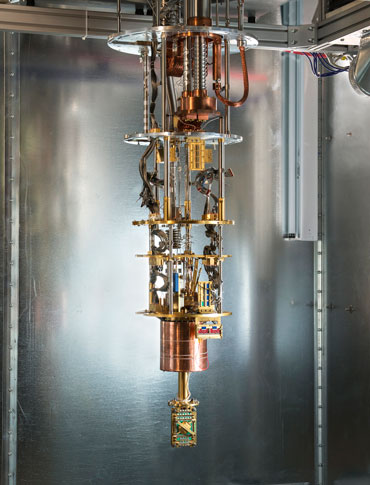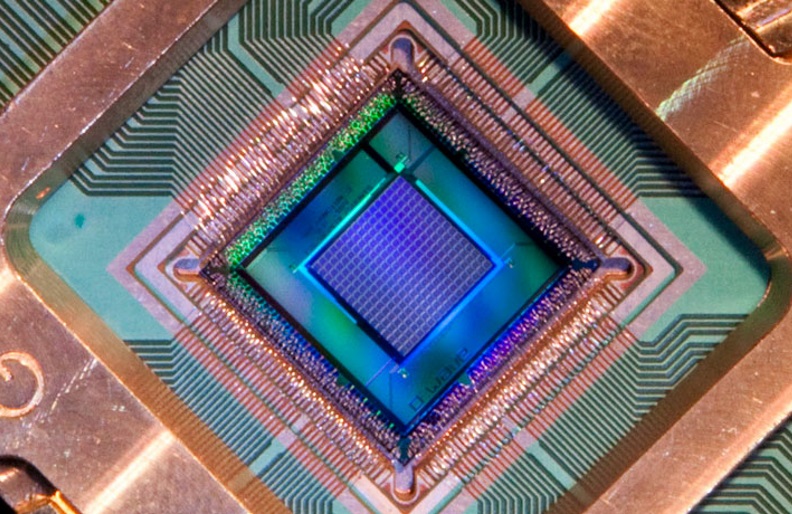Scientists have used a quantum computer to conduct large-scale simulations of two types of quantum materials. These studies involved about 2,000 quantum bits, or qubits — many more than the tens of qubits available in most quantum computers.
The results, published in two recent studies in Science and Nature, provide a new realization of the vision of famed physicist Richard Feynman, who hoped to use quantum computers — rather than computers based on standard, or classical, physics — to simulate quantum systems and study their behavior. “Nature isn’t classical, dammit, and if you want to make a simulation of nature, you’d better make it quantum mechanical,” he famously said in 1981.
Performed on a computer built by D-Wave Systems Inc. of Burnaby, Canada, the simulations provide a way to study phenomena that are very difficult to replicate with classical computers. “These are really rather beautiful pieces of science,” says physicist Seth Lloyd of MIT. The researchers are “able to reproduce all kinds of predicted phenomena.”
D-Wave’s machines, however, have attracted skepticism, and some physicists are not convinced of the importance of the new results.

In a study published August 22 in Nature, D-Wave physicists describe simulating the physics of a two-dimensional magnetic material, identifying a transition in which whirlpoollike defects known as vortices pair up in the material when the temperature drops. The theoretical prediction of this phase transition won the 2016 Nobel Prize in physics, and the phenomenon is relevant to the physics of superconductors, materials that transmit electricity without resistance at low temperatures (SN: 10/29/16, p. 6). The simulation’s results matched the output of simulations performed on classical computers.
Another simulation, reported July 13 in Science, replicated the behavior of a 3-D material that transitioned between different magnetic phases when the researchers changed variables such as an applied magnetic field. The observed phases included a disordered state known as a spin glass.
Other teams previously have performed simulations with quantum computers (SN Online: 1/22/10), but those simulations involved fewer qubits. “At this size, it’s the first time that this type of computation is done,” says D-Wave chief scientist Mohammad Amin, a coauthor of the Nature study. The more qubits, the more particles that physicists can simulate, allowing the computer to better mimic the physics that arises when many atoms get together in solid materials.
Sold commercially since 2011, D-Wave’s computers have stoked controversy. Scientists have debated whether the quantum machines really exhibit quantum behavior — such as the spooky linkages between distant particles known as entanglement — and whether the computers can work faster than classical computers (SN: 7/26/14, p. 6).
The new results give a boost to D-Wave’s credibility by suggesting that quantum effects really are occurring inside the computer. “It does seem to be the case that they’re using a quantum process to simulate another quantum process,” says physicist Daniel Lidar of the University of Southern California in Los Angeles. Though the results did not provide direct evidence that the computer exhibits quantum effects, “it seems unlikely that … this would have been successful had it been entirely classical.”
Still, some skeptics are unmoved by the results. “They haven’t addressed at all whether it’s a quantum system they’ve got,” says physicist Graeme Smith of the JILA research center in Boulder, Colo. And the new studies don’t attempt to address the question of whether D-Wave performs more quickly than a classical computer.
D-Wave’s quantum computer is a specialized type, based on a process called quantum annealing. While the computers currently under development by Google, IBM, Intel and others are intended to be general purpose and could perform currently impossible feats like breaking data encryption schemes (SN: 7/8/17, p. 28), quantum annealing computers are useful mainly for solving a certain type of problem called an optimization problem, in which the computer must choose the best option among many possibilities. D-Wave computers have been used for such problems already, such as sifting through particle collider data, detecting trees in aerial images and picking the best route for cabs to travel around Beijing.
Using D-Wave to simulate quantum systems opens up new possibilities for the computer, says physicist Davide Venturelli of the Universities Space Research Association’s Quantum Artificial Intelligence Lab at NASA’s Ames Research Center in Moffett Field, Calif. The studies “will give a lot of ideas to people on what to do with the D-Wave machine.”


One comment